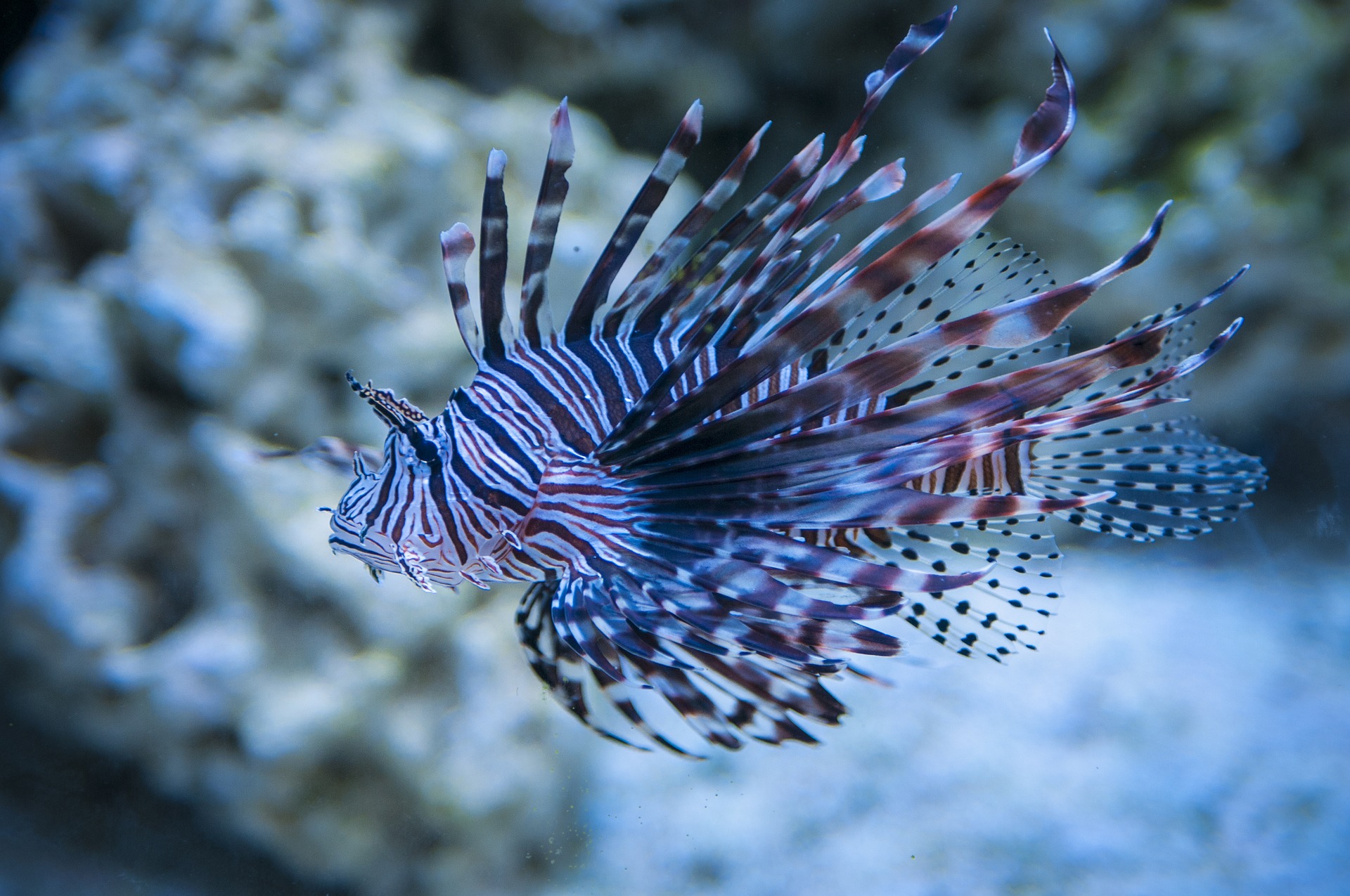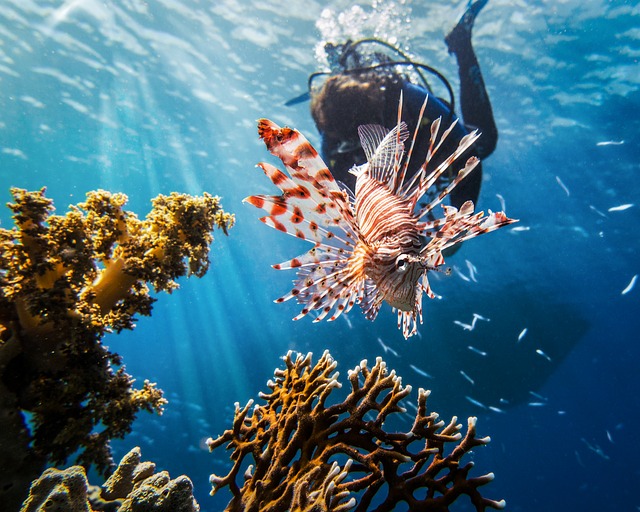
Creature Feature: Lionfish
Lionfish (Scientific names: Pterois volitans: red lionfish and Pterois miles: devil firefish) are native to the Indo-Pacific region, however, it is appearing more in Atlantic waters and is now considered an invasive species to this area. It has long been a favorite ornamental fish for home aquariums, which might account for its arrival to the southeastern U.S. coasts, the Gulf of Mexico, and the Caribbean.
Meet the Lionfish
The lionfish has a distinctive appearance of maroon-red or brown with white stripes covering its body from head to tail. Above its eyes and below the mouth are fleshy tentacle-like appendages. Its fan-like pectoral fins, 13 long dorsal spines, 10-11 soft dorsal rays, and 6-7 soft anal rays give it a formidable appearance which is underscored by the venom in its spines. The scales covering the body are elliptical or oval-shaped with smooth edges. Adults can grow up to 18 inches long, with juveniles around an inch. On average, lionfish have around 18 venomous spines along the top of their body.
The lionfish is native to the South Pacific and the Indian Ocean regions in warm marine waters. The species have been found in mangroves, seagrass, deep-water hard ocean bottom, shipwrecks, or coral reefs. Their native range includes a large area from Malaysia and Western Australia, north around the southern edges of Japan and South Korea, around Australia’s eastern coast and New Zealand, as well as throughout Micronesia.
Characteristics and Life History
Their ability to consume more than 100 species of fish, competing for food against native species such as grouper and snapper, make them one of the top predators of Atlantic reefs. Active and nocturnal hunters, lionfish catch prey by “cornering” them with their fan-like outstretched pectoral fins to pursue and trap them. Thanks to their conspicuous appearance and slow-moving habit, they rely on their coloring and spines for camouflage and to allude would-be predators.
The lionfish reproduce year-round, with females able to release around two million eggs per year, or nearly 17,000 eggs every three days. Juveniles reach maturity in about one year. With no known predators thanks to its venomous spines, coloration, prolific reproduction, and voracious appetite, individual lionfish can live upwards of 30 years.
Lionfish is an Invasive Species
The lionfish was first seen in the waters of South Florida as long ago as 1985 and were considered to be an established invasive species by 2000. Its predation within native fish communities has damaged biodiversity and coral reef recovery throughout the Atlantic ocean. Four marine sanctuaries, in particular, have been impacted by the presence of lionfish:
Gray’s Reef National Marine Sanctuary
Flower Garden Banks National Marine Sanctuary
Florida Keys National Marine Sanctuary
Monitor National Marine Sanctuary
Conservation and Management
Lionfish have been so successful in infiltrating non-native habitats while edging out native species that its presence has necessitated trapping and even spear-fishing to manage populations which are endangering reefs and native marine life.
One very effective trap is a second-generation dome trap also known as a fish aggregation device (FAD). It consists of a circular base and two half-hoops hinged to permit pivoting from a horizontal to a vertical position to close when retrieved. One of the advantages these have over other types of traps is not becoming “ghost traps” (where lost traps can continue to capture or harm fish or other marine life). Another plus is because they do not use bait, they reduce “bycatch” – meaning that they catch only lionfish and not other species.
While trapping lionfish is helping remove an added threat to the reefs, they aren’t just throw out or wasted once caught. After being collected, the fish are sold to restaurants and markets as a sustainable seafood source. Gray’s Reef National Marine Sanctuary Foundation hosts an event called “A Fishy Affair: Malicious But Delicious” where experienced chefs prepare their own unique lionfish dishes. The event, held every September, is designed to bring awareness to the issue of lionfish on Gray’s Reef and educate the public about invasive species, national marine sanctuaries, ocean conservation, and sustainable seafood.

